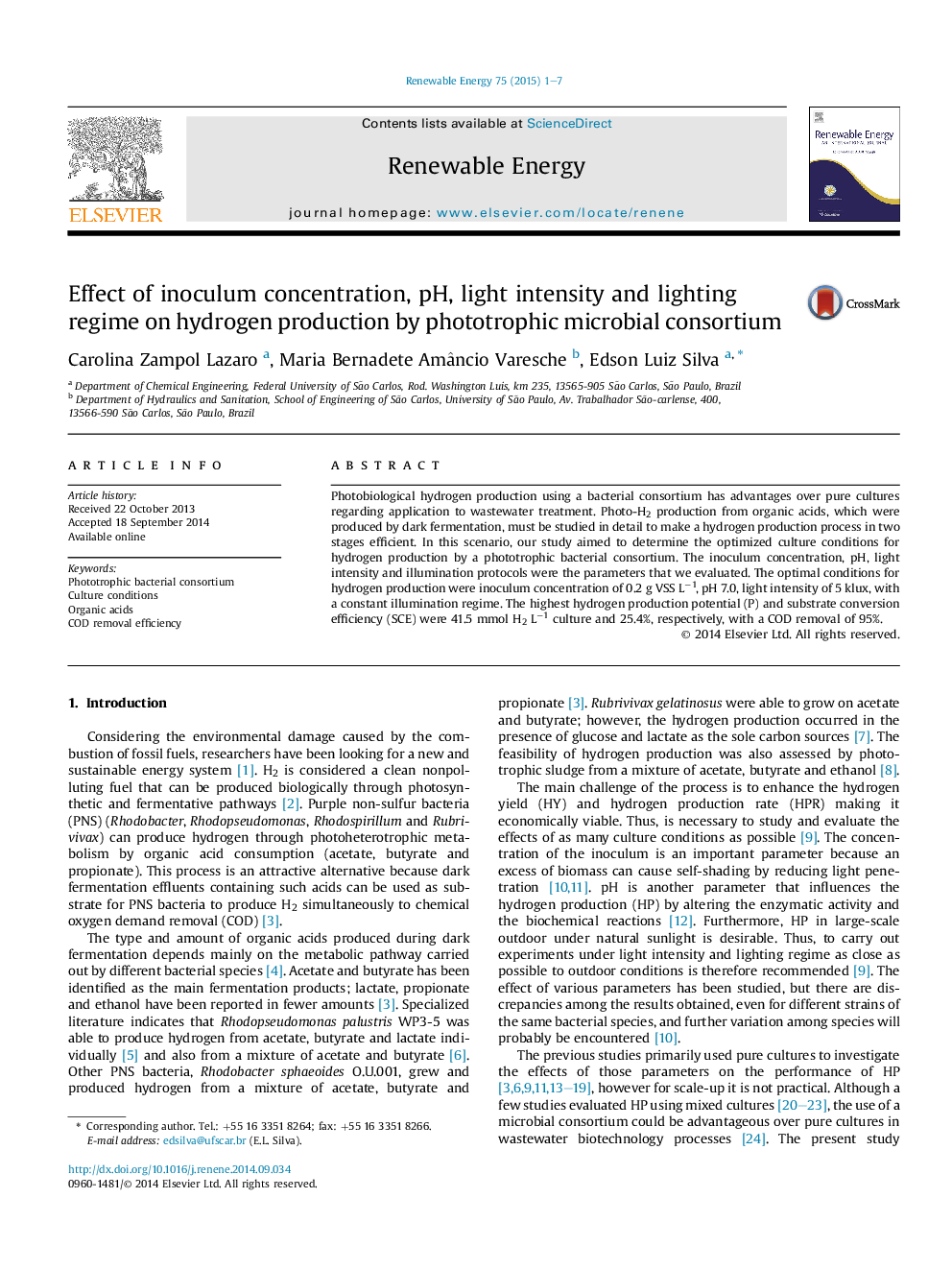| Article ID | Journal | Published Year | Pages | File Type |
|---|---|---|---|---|
| 6767568 | Renewable Energy | 2015 | 7 Pages |
Abstract
Photobiological hydrogen production using a bacterial consortium has advantages over pure cultures regarding application to wastewater treatment. Photo-H2 production from organic acids, which were produced by dark fermentation, must be studied in detail to make a hydrogen production process in two stages efficient. In this scenario, our study aimed to determine the optimized culture conditions for hydrogen production by a phototrophic bacterial consortium. The inoculum concentration, pH, light intensity and illumination protocols were the parameters that we evaluated. The optimal conditions for hydrogen production were inoculum concentration of 0.2Â g VSS Lâ1, pH 7.0, light intensity of 5 klux, with a constant illumination regime. The highest hydrogen production potential (P) and substrate conversion efficiency (SCE) were 41.5Â mmol H2 Lâ1 culture and 25.4%, respectively, with a COD removal of 95%.
Related Topics
Physical Sciences and Engineering
Energy
Renewable Energy, Sustainability and the Environment
Authors
Carolina Zampol Lazaro, Maria Bernadete Amâncio Varesche, Edson Luiz Silva,
